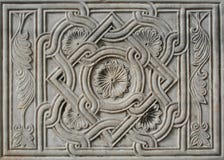Ancient Stone Houses, Cappadocia, Turkey. Many Rock Cut Dwellings Like This One Were Established In Cappadocia Primarily As Monastic Communities. Although Cappadocia Makes Its First Entrance Into History In The 6Th Century Bc When It Was A Persian Satrapy, The Origins Of Its Unusual Geology Began In The Tertiary Period Some 50 Million Years Ago. Since That Time, A Series Of Eruptions From Mt. Erciyes And Mt. Hasan Have Spewed Out Tremendous Quantities Of Volcanic Material Which Solidified, And Through The Forces Of Erosion, The Incredible Tufa Coned Landscape Was Formed. It Is With The Advent Of Christianity, However, That Cappadocia Becomes Of Interest To The Average Contemporary Tourist. The Romans Took Control Of The Region In 17 Ad And It Came Under Christian Influence With St. Paul Passing Through On His Way To Ancyra In The 4Th Century. Those Who Were Persecuted For Their Religious Beliefs, And Those Who Favored An Ascetic Existence In Which Hardship Brought Them Closer To God Sought Refuge In The Region. These Early Christians Dug Into The Soft But Firm Rock To Create Dwellings, Monasteries, And Churches, As Depicted In This Photo, Over Hundreds Of Years In Addition To Being Noted For Its Eroded Landscape And Cave Dwellings, Cappadocia Is Best Known For Its Cereals, Potatoes, Fruits And Wine.
ID 1284353 © Wormold | Megapixl.com
CATEGORIES
Your image is downloading.
Sharing is not just caring, it's also about giving credit - add this image to your page and give credit to the talented photographer who captured it.:
































































































